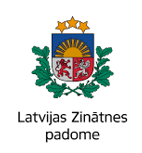



Project title: Dynamic laser speckle imaging for evaluation of fungal growth activity
Project number: lzp-2022/1-0247
Project applicant: University of Latvia (UL)
Project cooperation partner: Riga Technical University (RTU), Paul Stradins Clinical University Hospital (PSCUH) Scientific Institute
Research manager: Dr. phys. Ilze Ļihačova
Project implementation deadline: 01.01.2023. – 31.12.2025.
Total funding of the project: EUR 300,000, including the funding allocated to the UL part of the project 161 775 EUR, and the part of the RTU- 75 033 EUR, PSCUH - 63 192 EUR
Planned project results:
· original scientific articles the quoting index whereof reaches at least 50 per cent of the average quoting index of the sector which have been submitted or accepted for publication in the journals or conference symposia included in Web of Science Core Collection or SCOPUS databases – 2
· original scientific articles submitted or accepted for publication in the journals or conference symposia included in Web of Science Core Collection or SCOPUS databases – 3
· intellectual property licences or transfer agreements – 1
· successfully defended master’s thesis within the thematic focus of the project – 1
· doctoral thesis successfully defended according to certain procedures within the thematic focus of the project – 1
Project Summary:
The project aims at development and laboratory approbation of a non-contact optical technique for early evaluation of fungal growth activity in solid and liquid media. Non-contact evaluation will exploit physical phonomemon of variable laser speckle, analysed by temporal image sequence processing techniques. Fungal growth activity evaluation process will comprise acquisition of time variable laser speckle patterns in given sample and obtained image sequence processing. During the project the proposed technique and algorithm will be tested in controlled microbiological conditions and validated on different major clinical fungal isolates. The proposed technology will perform real time tracking of mycelial growth and expansion and implement these results for rapid early enumeration and identification of the sensitivity to antifungals. The project team will be composed of experienced clinical microbiology, biophotonics, electronics and information technology experts, young scientists and students from UL, PSCUH and RTU

 CONFERENCE
CONFERENCE